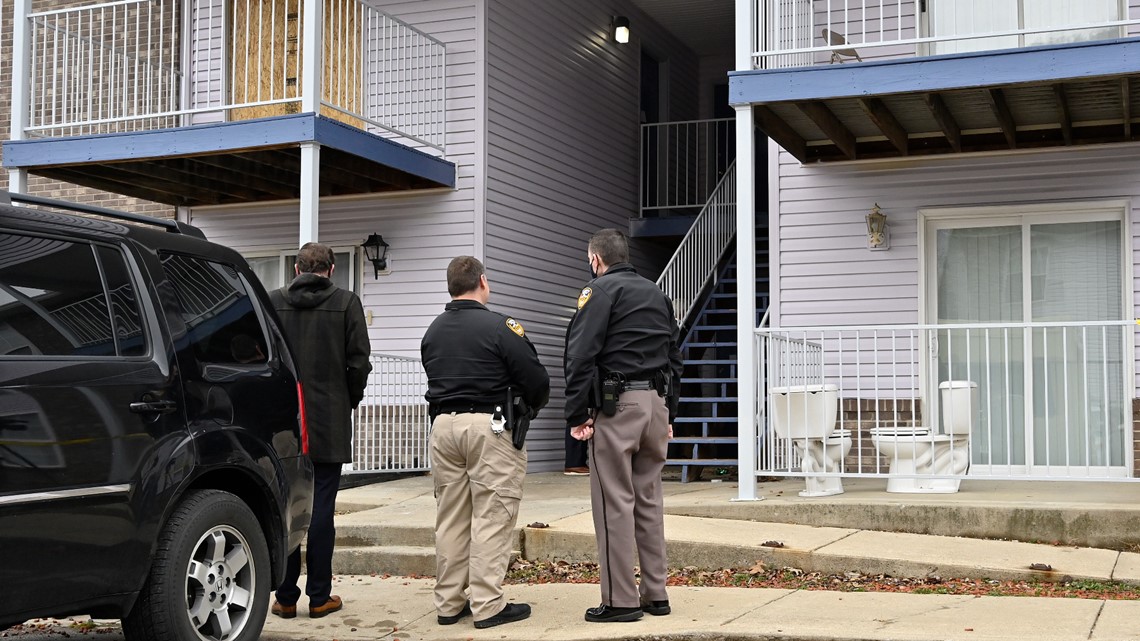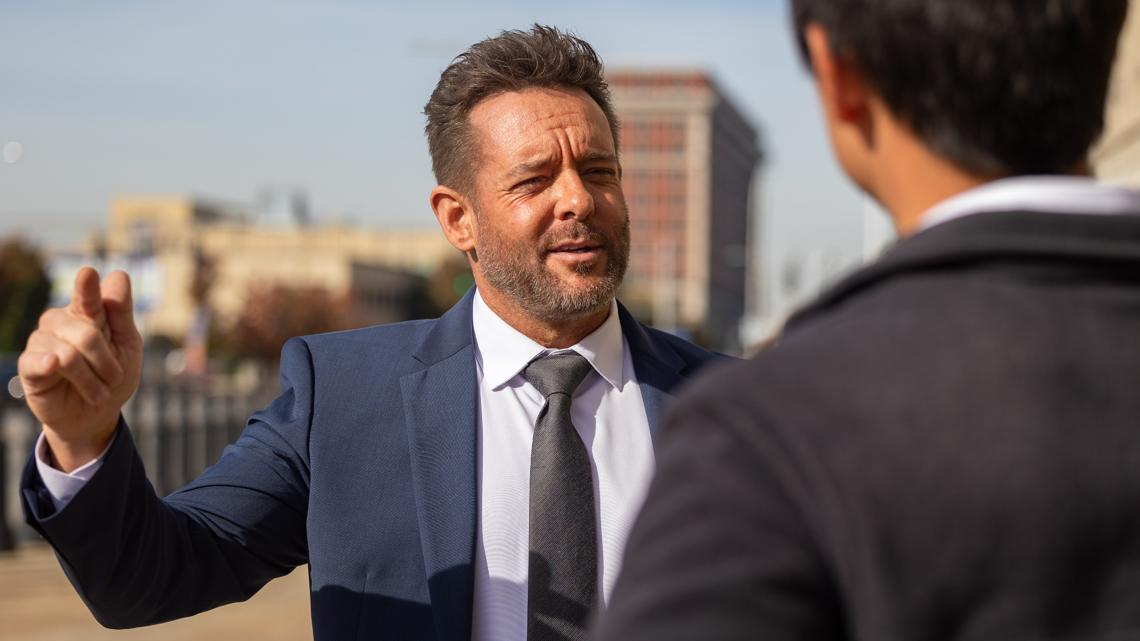LOUISVILLE, Ky. — The ex-LMPD detective charged for his actions the night of the Breonna Taylor police raid insists he saw the window and sliding glass door of her apartment ‘light up’ with gunfire the night Metro Police shot and killed her.
Brett Hankison testified in his own defense as the final witness in his federal retrial. He’s charged with violating the civil rights of Taylor and her neighbors in March of 2020, when he fired 10 shots in the side of Taylor’s apartment.
Hankison got emotional multiple times, shedding tears while recounting what he witnessed and explaining his decision after his fellow officer came under fire.
“It sounded like a semi-automatic or automatic weapon in that hallway executing everybody in my stack [of officers],” Hankison said during testimony on Monday.
Hankison testified that soon after officers knocked down Taylor’s front door, he felt an intense ‘boom’ and saw a large muzzle flash which he believed came from a rifle.
“I didn’t believe it, sir. I knew it. I saw it with my own eyes,” he said responding to one of his attorney’s questions. “I saw those windows and doors lighting up, period.”
For a moment, Hankison stood up to demonstrate what he says he saw in Taylor’s doorway -- a silhouette of someone standing in a ‘military shooting stance’ about 15-feet away.


Hankison reiterated what he’s told jurors in his two previous trials: That he was ‘trying to stay alive, [and] trying to keep my partners alive.”
“I knew I could get a direct shot on the shooter – where I knew he was,” he said Monday.
Hankison himself has admitted he could not identify a person or a target when he fired through Taylor’s sliding glass door and window, leading prosecutors to allege he fired blindly and recklessly.
When asked if he was concerned he may hit one of his fellow officers, Hankison responded exactly how he did in 2022, saying “absolutely not.”
Hours earlier, retired LMPD Sergeant John Mattingly, the officer needing surgery that night after being shot in the leg, testified that he agreed with Hankison’s decision given the circumstances and what he knew at the time, and said if he were in Hankison’s position, he would have done exactly the same thing.
“Because what he knew -- what people don't know -- is when I talked to him personally, I said, ‘Man, why did you do this?’ Because I was curious, too. [It] was the fact that he said in that doorway, in his mind, when he saw the flash, when he saw the guy shoot, he thought there was an assault rifle there.”
Investigators did not find an assault rifle on scene, though they did find shell casings later determined not to be connected to the case.
Mattingly testified he saw the ‘silver tip’ of a handgun.
“All he heard was multiple shots, and the way it was echoing in that door area. He thought we were getting gunned down from inside, and he did anything he could to get us to be able to go home to our families at the end of the night, and I respect that,” Mattingly told WHAS11. “My biggest concern now is just for Brett because here's a guy who hurt no one, you know, drywall got destroyed, and he's looking at life in prison.”


Bianca Austin, Breonna Taylor’s aunt, told WHAS11 last week that Taylor’s friends and family “just want accountability for [Hankison’s] actions as an LMPD officer at the time that Breonna was killed.”
In a new twist, defense attorneys brought their own expert on use-of-force policies to the stand.
James Borden is a former police officer from Nevada who has reviewed Hankison's case. He said that given the threat Hankison perceived, his decision to fire his gun was supported by the available evidence despite not seeing the person he was firing at.
“He was doing what he needed to do to stop the threat,” Borden said, later adding it was Hankison’s ‘best guess’ based on “where he believed the subject was.”
It comes as several of prosecutors’ witnesses, former and current law enforcement including LMPD Chief Paul Humphrey, testified they didn’t understand Hankison’s choice to fire that night and that his decision didn’t align with LMPD policy or best practice.
Hankison’s testimony continues Tuesday, with closing arguments to come soon after. The jury will then get the case and begin deliberating a verdict.
Hankison faces a maximum penalty of life in prison, if convicted. No prior jury has found him guilty.
►Make it easy to keep up-to-date with more stories like this. Download the WHAS11 News app now. For Apple or Android users.
Have a news tip? Email assign@whas11.com, or visit our Facebook page or X feed.

